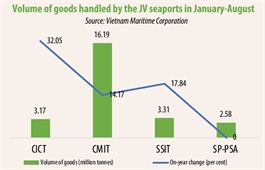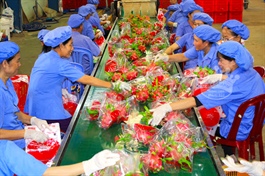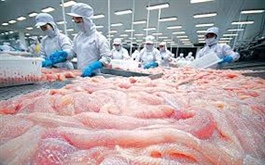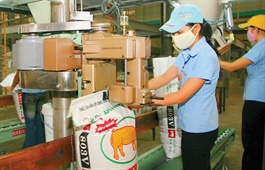Airlines reinventing the skies for agricultural business lines
Airlines reinventing the skies for agricultural business lines
While many of the worlds’ aircraft have been grounded throughout the pandemic, local airlines have found ways to support Vietnam’s agricultural export businesses in the wake of sky-high freight charges.
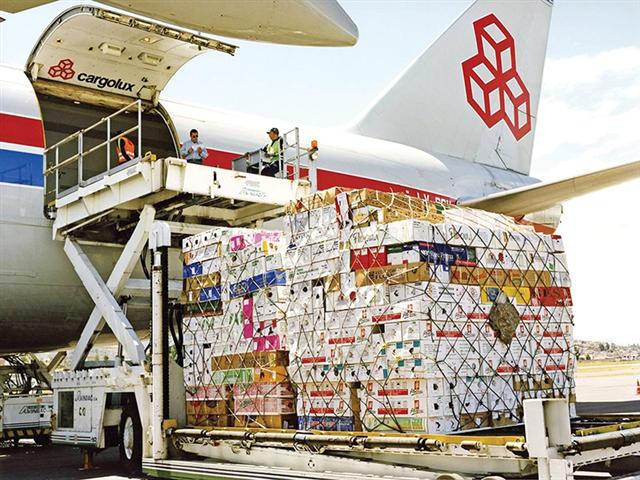
Local airlines combine repatriation flights with low-cost deliveries of agricultural products to support local producers
|
With that, and some creativity and ambitious plans to establish domestic cargo transport for international routes, hopes are high that the country’s fruit and vegetables can soon be delivered to consumers overseas.
The fact that only a few airlines, such as Cathay Pacific and Slovak Airlines, can currently fly from Vietnam to international markets like the United States has pushed the prices of global agricultural exports up, increasing the burden on local businesses seeking to sell off their produce.
Ngo Thi Thu Hong, general director of Ameii JSC, which prepared a shipment of late-ripened longan for sale to the Czech Republic, Sweden, and Italy, is worried about the transportation costs. The price for 1kg of longan has increased to over $4 from $1.6 before the pandemic, and generally transport fees make up a huge share of these prices, making it difficult for companies like Ameii to compete with other export markets like Thailand and China.
Moreover, since the pandemic has limited air traffic in many regions of the world, simply finding a plane to deliver goods can already be a problem.
“We have received more than 20 new orders from the EU for our fruit and vegetables. However, though we can still export some of our wares, the overall volume has decreased significantly,” Hong said.
The persisting limitations in air traffic only add up to the general issue of high delivery fees. At Vina T&T – a company specialising in agricultural exports to the US, Canada, Australia, South Korea, and China – the need to transport their produce by air to guarantee quality and freshness makes up around 30 per cent of the company’s costs.
Furthermore, Vina T&T expects its transportation costs to spike in 2020 to thrice the amount before the pandemic. For instance, the fees for shipping 1kg of dragon fruit to the US has increased from $3 to $7. Unable to change anything about these fees, Vina T&T’s general director Nguyen Dinh Tung could only describe the situation as one with “many difficulties”, especially in competing with other regional exporters to the US.
Last year, Tung’s company made around $43 million for exporting its fruit to the US, accounting for more than 50 per cent of Vietnam’s fruit output to this market. This year, however, exports are only about 150 tonnes per week, reflecting a decrease of 30 per cent to before the pandemic.
While Vina T&T can sell some of its products to the local market, this channel only accounts for around 5 per cent of the company’s output, and dragon fruit sells for just $1-2 compared to $10-11 per kg in the US. “However, shipping to the US brings us about 1-2 per cent profit now, and we have been meeting additional hurdles in guaranteeing the freshness and quality of our goods due to the lockdowns. We will lose both prestige and a lot of money if the quality is not right,” Tung said.
Improvements necessary
In general, the increasing connectivity between countries has created good conditions for Vietnam’s export development, and despite the pandemic, goods transported through the country’s airports are set to reach 1,300 tonnes in 2020, just 2 per cent less than in 2019. However, the amount of agricultural products being transported by air remains modest, accounting for only about 5 per cent of all air-shipped wares.
According to Do Xuan Quang, vice general director of Vietjet, the fact that foreign airlines make up for nearly 90 per cent of international aviation is one reason why Vietnamese airlines had been reluctant to invest into developing their cargo fleets. Currently, Vietnam’s aviation stands about 10 years behind the development of China with an annual growth rate of around 10 per cent, noted the International Air Transport Association.
However, Vietnam’s infrastructure lacks specialised logistics that connect sea, air, rail transport effectively. In addition, the country’s airport and warehouse systems are already overloaded. By the end of the year, experts predict demand for cargo transported through Hanoi’s Noi Bai International Airport exceeding one million tonnes – much more than its current capacity of 300,000 tonnes.
Forecasts state that air transport of agricultural goods will increase as soon as the pandemic eases, especially since Vietnam signed many free trade agreements which will further boost exports of this commodity. Besides this, several large domestic corporations, like THACO, Masan, and Vinamilk, are planning on expanding their investments in agricultural exports.
The government has approved reopening international routes from last week – good news, said Tran Thanh Hai, deputy director of the Agency of Foreign Trade of the Ministry of Industry and Trade. However, the current reduction of air-shipped freight remains an “urgent issue” for the industry, Hai went on, especially with regards to growth momentum and expected export increases.
Finding alternatives
COVID-19 gave Vietnam’s aviation time to rethink approaches and restructure entire business lines. As such, the development of freight carriers through the skies may help to reduce local airlines’ risks rather than putting all eggs in the passenger transport basket.
Both major urban centres, Hanoi and Ho Chi Minh City aim to become freight hubs for Southeast Asia, and domestic airlines could grab the chance to outmanoeuvre regional competitors in this sector as direct contenders, such as Thailand and Malaysia, currently have only one major transportation hub each.
Meanwhile, instead of being bound to the ground, some local airlines use their passenger craft in alternative ways, offering freight transports and reducing the cost burden for agricultural firms.
“We are using our 787s to transport cargo, each with around 20-25 tonnes per flight,” said Vu Tien Dung, head of Bamboo Airways’ Cargo Department. “In some cases, we have even been using passenger compartments, such as for flights to Germany and South Korea, with an increased payload of 38 and 40 tonnes, respectively.”
For October, the airline plans another 10 flights to South Korea, Taiwan, Australia, and the US to pick up overseas Vietnamese and bring them back home. “As our outgoing flights will have no cargo, we are happy to cooperate with agricultural export companies to deliver their goods,” suggested Dung to help reduce these businesses’ transportation costs.
Nevertheless, taking advantage of these outgoing no-load flights is not easy. “We have talked with Vietnam Airlines about shipping our goods to the US and Canada on repatriation flights. However, the carrier refused, stating that these countries’ pandemic prevention measures were too tight,” Vina T&T’s Tung said.
Aware of the agricultural sector hurdles in exporting their goods, Vietjet is planning to convert three of its passenger craft into cargo transports during the third quarter of this year. Vietjet’s Quang said, “We have already renovated three aircraft and want to add another four in this quarter to carry goods.”
In October alone, the airline will launch cargo flights to Los Angeles and Chicago from Hanoi, using its Boeing 747s while offering “decent price policies,” Quang said.
“The government should support the establishment of dedicated cargo airlines to help boost local agricultural exports,” he suggested, adding that Vietnam could learn from Thailand’s example, which reduced taxes, petrol fees, and other expenses for those airlines that transport produce and similar freight.
Thailand’s incentives and large-scale operations have so far enabled the nation to stay ahead of its regional competition and even deliver goods throughout the pandemic at cheaper costs than Vietnam.
|
Export turnover of the agro-forestry-fishery sector in August amounted to around $3.63 billion, bringing this year’s total export value for the first eight months to about $26.2 billion, down 0.9 per cent over the same period last year. Among these, agricultural exports amounted to $12 billion, down 3.2 per cent, livestock was at $250 million, down 25 per cent, and seafood came out at $5.2 billion, down by 5.3 per cent. Meanwhile, forestry exports reached $7.83 billion, an increase of 10.3 per cent. Source: Agro Processing and Market Development Authority of the Ministry of Agriculture and Rural Development |






